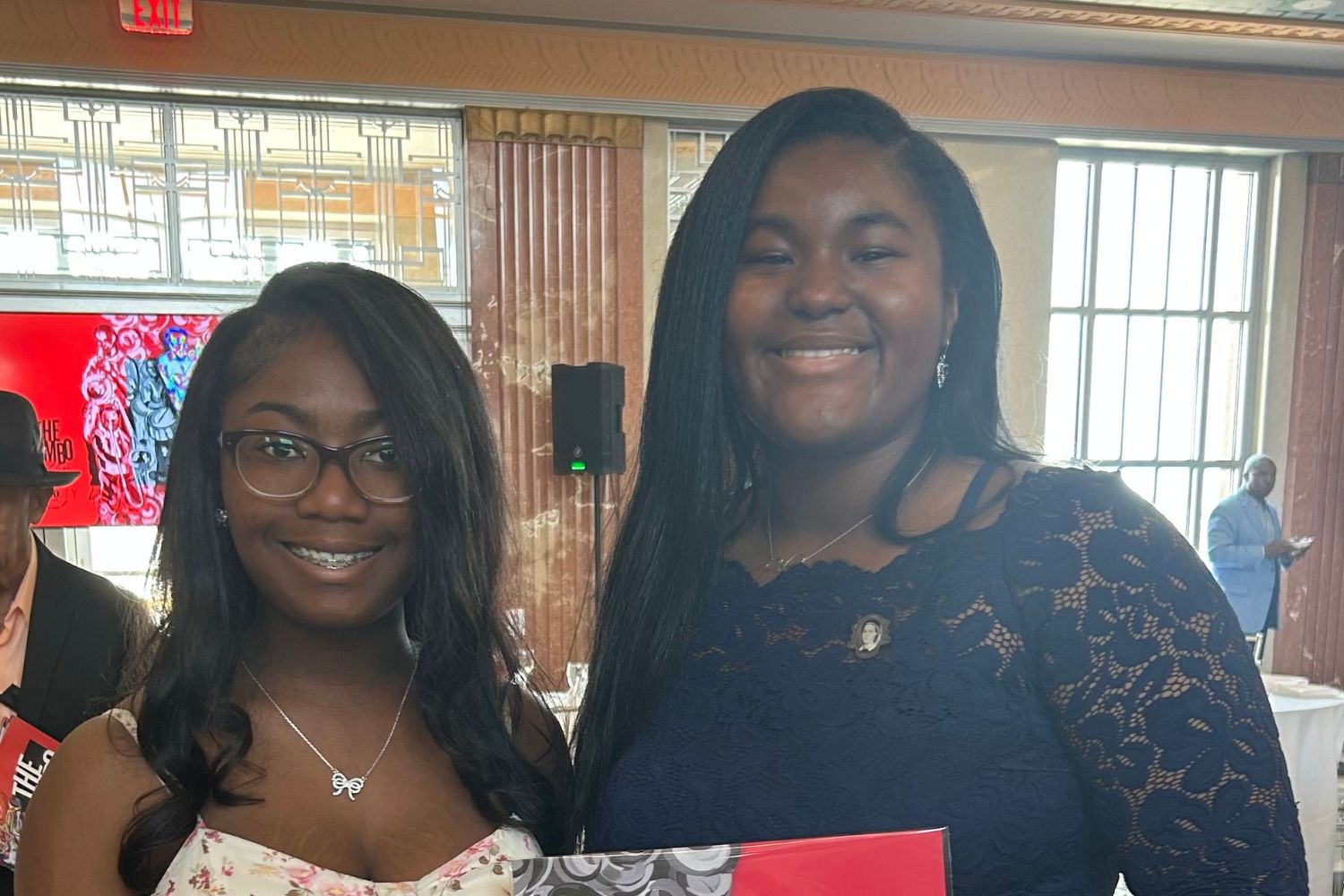Teens Who Made History with Pythagoras’ Theorem Discovery Publish Their First Academic Paper with New Proofs

Ne’Kiya Jackson (left) and Calcea Johnson (right). Photo credit: Calcea Johnson
- In their peer-reviewed work, Calcea Johnson and Ne’Kiya Jackson present five new ways of proving Pythagoras’ Theorem via trigonometry
- They also detail a new method for finding proofs that yield at least five more
In 2022, U.S. high school students Calcea Johnson and Ne’Kiya Jackson astonished teachers when they discovered a new way to prove Pythagoras’ theorem using trigonometry after entering a competition at their local high school. As a result, both students were awarded keys to the city of New Orleans, and even received personal praise from Michelle Obama.
Today they become published authors of a new peer-reviewed paper detailing their discoveries, published in the Mathematical Association of America journal American Mathematical Monthly.
Pythagoras’ famous 2,000-year-old theorem, summarized neatly as a2 + b2 = c2, means that you can work out the length of any side of a right-angled triangle as long as you know the length of the other two sides. Essentially, the square of the longest side (the hypotenuse) is equal to the squares of the two shorter sides added together.
Many mathematicians over the years have proved the theorem using algebra and geometry. Yet proving it using trigonometry was long thought impossible, as the fundamental formulae of trigonometry are based upon the assumption that the Pythagorean Theorem is true – an example of circular reasoning.
Nevertheless, both Johnson and Jackson managed to solve the math problem independently of each other and prove Pythagoras’ theory without resorting to circular reasoning — a feat that has only been managed twice previously by professional mathematicians.
Johnson and Jackson then collaborated to share their work at a regional meeting of the American Mathematical Society in Atlanta in March 2023. Encouraged by their reception, Jackson and Johnson then decided to submit their discoveries for final peer review and publication. Their study outlines five new ways of proving the theorem using trigonometry, and a method that reveals five more proofs, totaling ten proofs altogether. Only one of these proofs was previously presented at the conference, meaning that nine are totally new.
“I was pretty surprised to be published” says Ne’Kiya Jackson. “I didn’t think it would go this far”.
“To have a paper published at such a young age — it’s really mind-blowing,” agrees Calcea Johnson.
“It’s very exciting for me, because I know when I was growing up, STEM [science, technology, engineering, and math] wasn’t really a cool thing. So the fact that all these people actually are interested in STEM and mathematics really warms my heart and makes me really excited for how far STEM has come.”
In the paper, the authors argue that one of the reasons that trigonometry causes such confusion and anxiety for high school students is that two completely different versions of trigonometry exist and are defined using the same terms. This means that trying to make sense of trigonometry can be like trying to make sense of a picture where two different images have been printed on top of each other.
Jackson and Johnson argue that by separating the two versions, and focusing on just one of them, a large collection of new proofs of the Pythagorean Theorem can be found.
Jackson currently studies at Xavier University of Louisiana and is pursuing a doctoral degree in pharmacy, while Johnson is studying environmental engineering at Louisiana State University’s Roger Hadfield Ogden Honors College.
“I am very proud that we are both able to be such a positive influence in showing that young women and women of color can do these things, and to let other young women know that they are able to do whatever they want to do. So that makes me very proud to be able to be in that position,” says Johnson.
Commenting on Johnson and Jackson’s achievements, Della Dumbaugh, editor-in-chief of American Mathematical Monthly, says, “The Monthly is honored and delighted to publish the work of these two students on its pages.
“Their results call attention to the promise of the fresh perspective of students on the field. They also highlight the important role of teachers and schools in advancing the next generation of mathematicians.
“Even more, this work echoes the spirit of Benjamin Finkel when he founded the Monthly in 1894 to feature mathematics within reach of teachers and students of mathematics.”